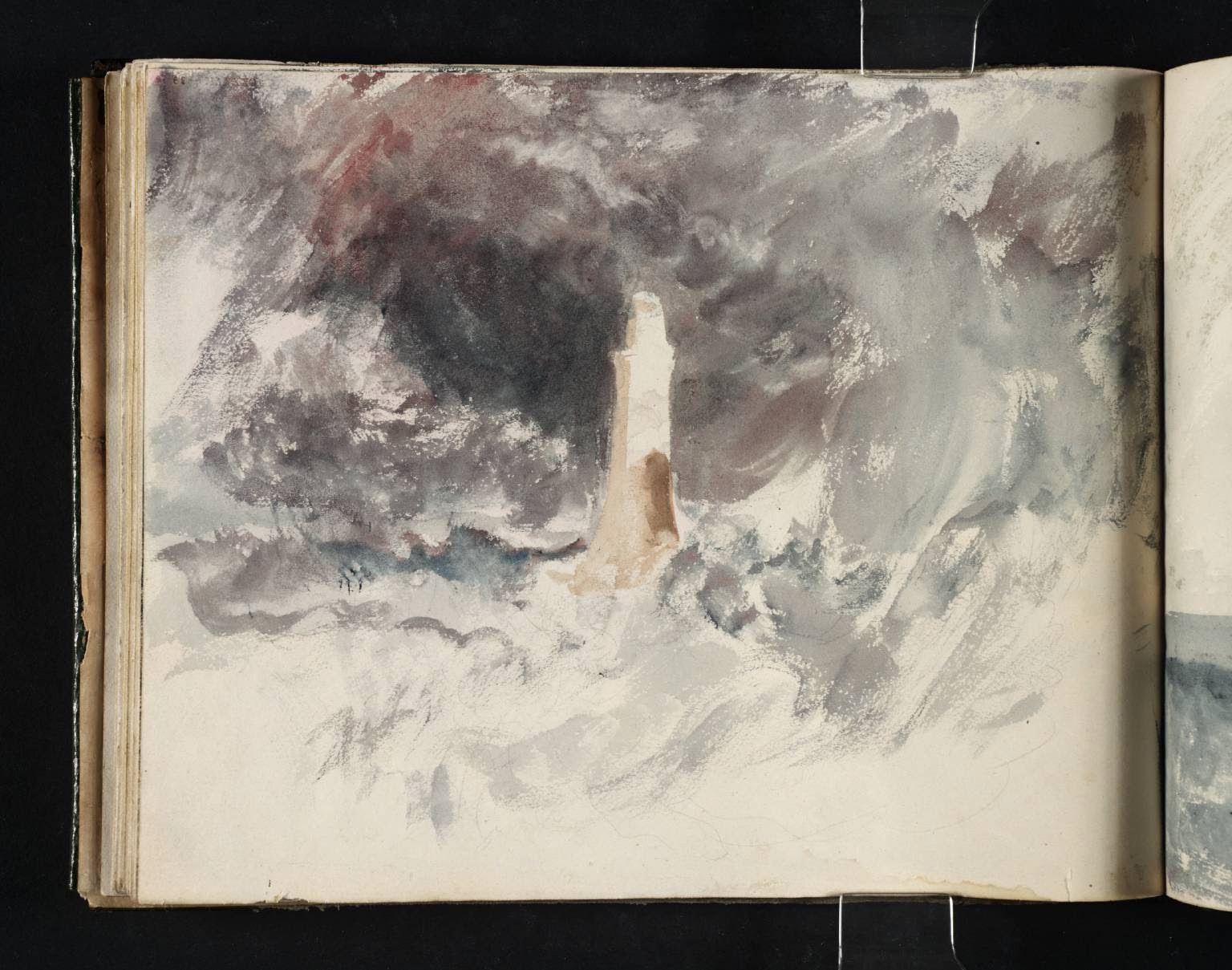 |
| Intaglio by Samuel Owen, 1814 |
The Eddystone Lighthouse marks a group of dangerous rocks several miles south of the coast of Cornwall near the opening of the English Channel. At the highest tides these rocks would be submerged, famously causing many shipwrecks. A wooden lighthouse was first built (with great difficulty and daring) on the rocks in 1698. After only five years, this structure was completely destroyed in the Great Storm of 1703. A second wooden lighthouse lasted until 1755, when it burned. John Smeaton directed completion of the first stone lighthouse in 1759. Reputedly inspired by the shape of an English oak tree, Smeaton's granite lighthouse remained in place for the next 120 years. This was the structure known to J.M.W. Turner and other marine artists of the 19th century.
 |
| Mezzotint after J.M.W. Turner, 1824 |
Above, pages from an 1813 sketchbook with three quick watercolors by J.M.W. Turner capturing the appearance of the lighthouse during storms. Below, stormy atmospheres surrounding the lighthouse seen in wider perspective
– Turner's watercolors from the following decade.
 |
| Engraving by W.B. Cooke, 1836 |
 |
| Painting by John Lynn, 1810 |









